This post may contain affiliate links. If you make a purchase through a link, I may receive a small commission, at no cost to you. These commissions help keep this website up and running, and I thank you for your support. Read my full disclosure here.
Please note that this tour regularly changes the locations that it takes guests to, so there is no guarantee that you will be taken to these same vineyards. Check with the tour company for further details.
During our stay in the beautiful historic city of Bordeaux, we went on a full day tour to the Médoc wine region. This region is famous for its full-bodied red wines with high tannins, low acidity, and medium to high alcohol levels. We decided on a full day tour rather than a half day one because it enabled us to see more of the area as it is abound with stunning Châteaux.
We booked our full-day small group tour with Ophorus. First thing in the morning, we headed down to the Bordeaux centre city Tourist Information Centre to join our tour group of about 15 others and head off in a minivan. The group consisted mostly of Americans and a few Europeans. It took us about an hour to get to our first stop. Along the way, our tour guide, Helene, enthusiastically instructed us on interesting facts and history about Bordeaux wines and, more specifically, about the wines found in the Médoc region. A topic which she was clearly passionate about.
Up until the 1700s, red wine was mostly grown in Graves, which is south of Bordeaux. But they were keen to develop another red wine region, so they drained the swamplands of Médoc to turn it into the wine region it is today. Only red wine produced in the Médoc region is allowed to be registered under the Médoc appellation. However, a few of the producers also make white wine, but this is considered a second wine and must be registered under the Bordeaux AOC or some other generic appellation.
What is a French wine appellation?
- The Appellation d’Origine Contrôlée, or AOC system, has rules about what grape varieties can be used, the ripeness, minimum alcohol levels, how dense a vineyard can be planted and even how much it can yield. In France, the appellation refers not just to where the grapes are grown, but also what kind of wine it is.

We knew we had finally reached the famous Médoc region when we found ourselves driving amongst vineyards as far as the eye could see. Then we started spotting the Châteaux. The D2 is the main road that runs through this area and is referred to as the ‘Castles Route’ for good reason. At first we were excitedly pointing them out to one another, but then there became so many that we just sat back and watched them pass by with big dreamy eyes. I imagined how romantic it would be to live in one, and preferred not to think about the horrendous running costs (anyone watched the amazing TV series Escape to the Chateau and its spin-off show Escape to the Chateau: DIY?).
Château Marquis de Terme
Our first stop was at Château Marquis de Terme, which has been run by the same family since 1935. This vineyard has 40 hectares of Cabernet Sauvignon, Merlot and Petit Verdot. Our tour guide handed us over to the gracious host, who began the tour by taking us to nearby vines to admire the ripening fruit. She encouraged us to try one, and they were delicious, super plump and juicy.
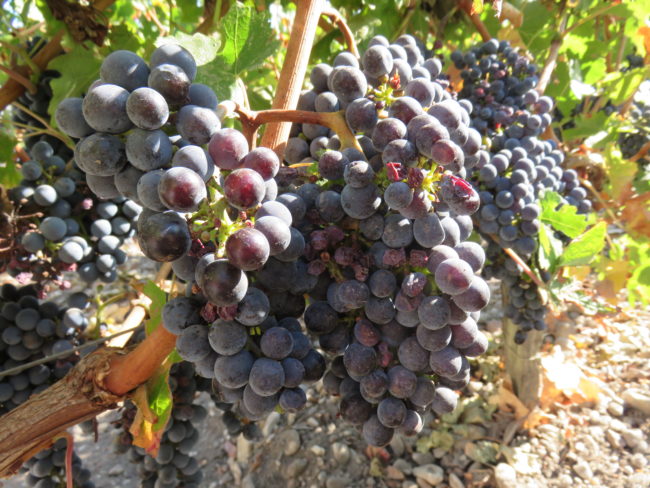
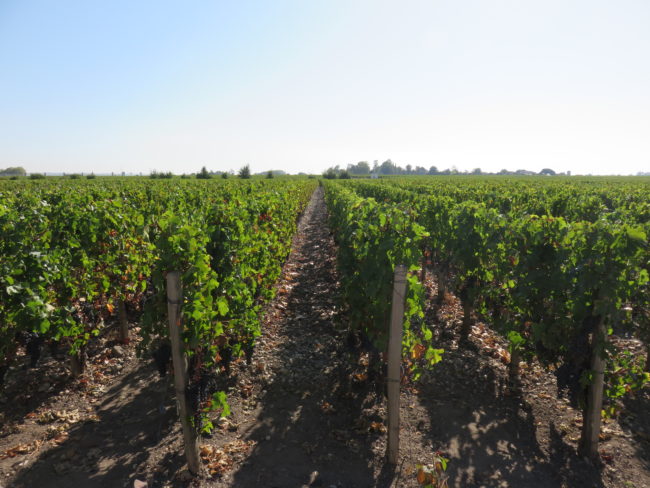
She took us behind the scenes so we could see where the grapes were taken after they were harvested. The sheds were abuzz with activity as staff prepared for the harvest. The large warehouse that stored the barrels was cool to keep the wine at the perfect temperature, and air conditioners were working overtime, as it was a hot day. The barrels looked beautiful, all perfectly lined up. I was interested to see the concrete egg shaped vessels as I had not seen these before. Apparently, these were designed with the help of the French company Nomblot, which makes the usual concrete vats. The egg shape provides a continuous flow to the wine as it ferments and ages, and the thick walls provide good insulation and a stable temperature during fermentation.
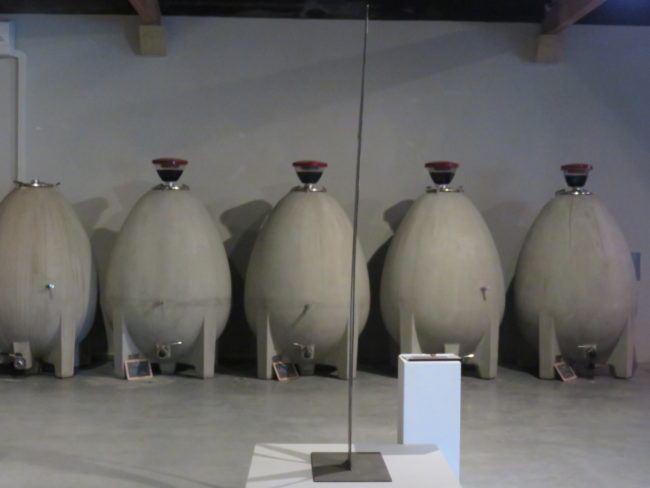
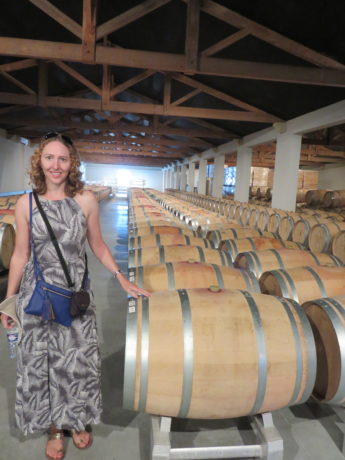
We got to taste three wines here. One of them was rosé, which I was surprised to see, as they don’t make many in this area. I did enjoy the tasting and learning more about the vineyard and its history. If you are visiting here without a tour, they also provide bikes to further explore the area.


Château Margaux
Our next stop was to the nearby Château Margaux, a famous billion dollar vineyard. Unfortunately, we didn’t get a chance to do tastings here. However, visitors are welcome to explore the grounds around the visitor area. We walked up the beautiful tree lined driveway to gawp at the majestic castle through the grills of the gate. The wines from this vineyard fetch a rather hefty price, so don’t expect to see them at your local bottle store. In fact, they privately sell futures of their best wines before they are even plucked from the vine. If you want a tour of this place, you will need to book in advance.
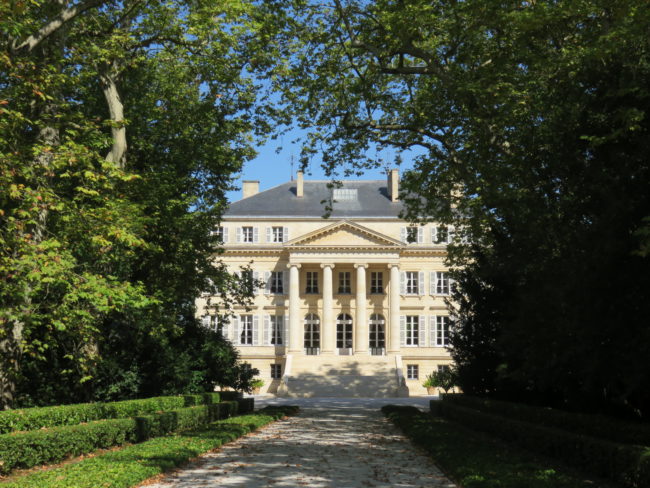
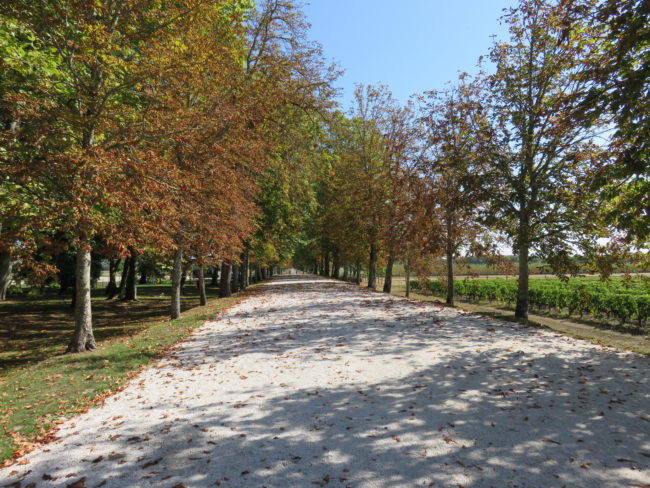
Pauillac
Our tour guide took us to the sleepy village of Pauillac for lunch. If you are arriving here by car, there is quite a lot of car parking under the trees by the marina. Lunch wasn’t included in our tour fee, but the guide gave us restaurant recommendations, and there was also a local bakery. We decided to take the cheaper option and went to the delicious local bakery called Boulangerie Bellet (5 Quai Albert Pichon, 33250 Pauillac, France). I enjoyed a quiche and a chocolate éclair, and hubby had pizza bread and a lovely fruit tart. The town is situated directly by the Gironde estuary with a marina and a peaceful esplanade. We sat on the seating and enjoyed our picnic lunch. With our remaining time, we had a quick walk up and down the main street and then along the marina and stopped to admire the giant wine bottle statues dotted along it.
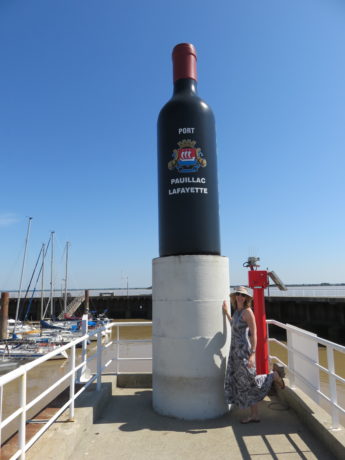
As a group we had agreed on a one hour lunch break in order to get time to visit a couple of attractive Châteaux to take photos. However, as you come to expect on a tour (which is why I don’t usually take tours), a group of people did not show up at the bus at the agreed time. The poor tour guide spent about half an hour trying to ring them and eventually went scouring the main street to find them to get them back on the bus. I find it hard to understand how people can be so self-centred?
Anyhow, that meant we didn’t get time to stop and get out for a closer look at some of the beautiful Châteaux, we only ended up driving past them, so my photos ended up rather wonky with some window reflection in them.
Château La Tour Carnet
Our second vineyard was Château La Tour Carnet. This was my favourite of the day because of its interesting history and because we actually got to see inside the Château. In fact, you can actually stay here for a very reasonable price. As soon as I discovered this, I immediately fell in love with the idea of coming back here one day and spending a few nights. Our visit started with a tour of the house, which is actually a former medieval fortress with a little moat around it. Inside it was decorated in a style inspired by the age of the house and had a wonderful collection of antiques. Two beautiful bedrooms can be booked, and guests also have access to a rather grand dining room. Our guide advised us that the owner, French wine magnet Bernard Magrez, regularly visits the vineyard and we were even taken to see the study that he uses when visiting.

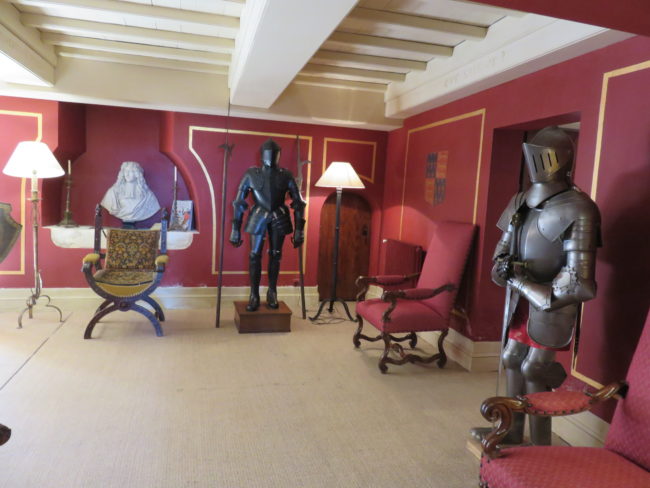

Eventually, our guide took us to the inner workings of the vineyard and we got to do some wine tasting as well. When looking for this wine, search for the symbol of an old set of keys crossed at the bottom front of the bottle. It’s inspired by the lovely collection of old keys in the house on display.

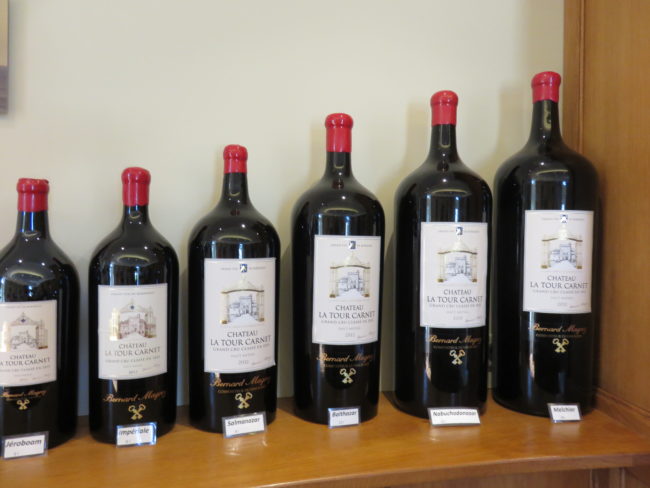
Château Lagrange
Our final stop was at Château Lagrange. This vineyard is owned by the Japanese group, which also owns the famous Japanese whiskey brand Suntory. They actually send their used wine barrels to Japan to make their whiskey. We were lucky to be the only visitors by the time we arrived in the afternoon, but it sounds like it gets rather busy here as it is quite popular.
Similar to the other vineyards, the hostess took us on a tour and explained their process for making wines. We got to take pictures of the outside of the Chateau but you can’t go in. They have beautiful gardens and a lake. When visiting, remember not to walk on the grass. The hostess shouted at one of the tourists, “Don’t walk on the grass – these are French gardens” which made everyone laugh.
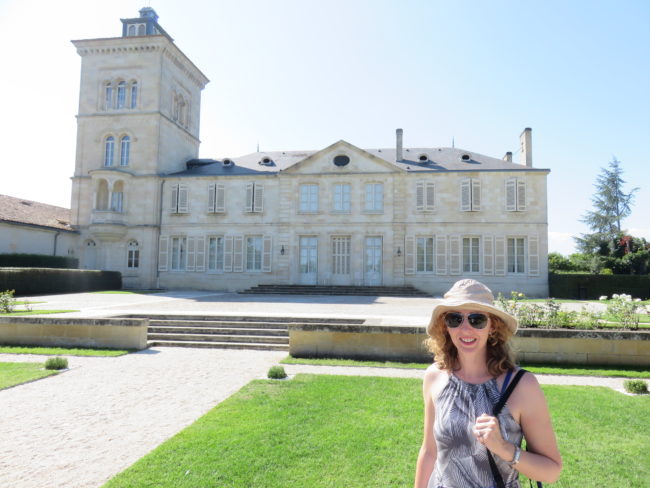
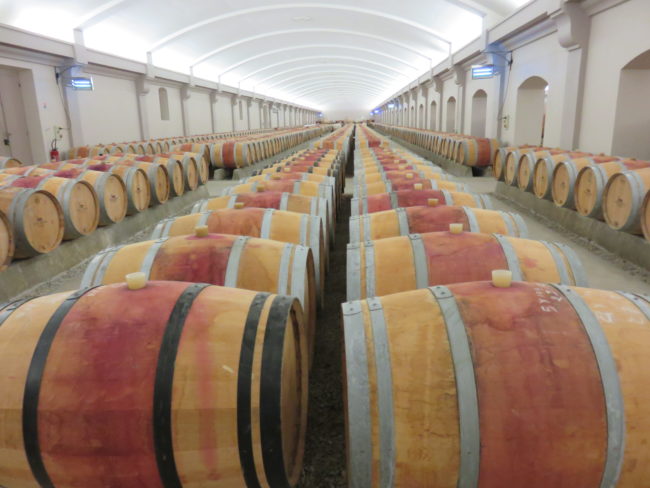
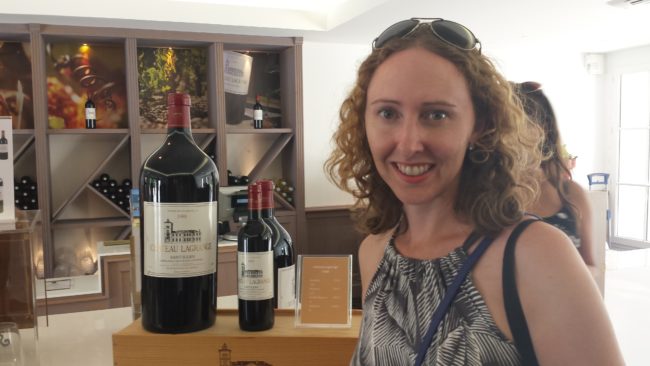
We returned to Bordeaux at about 6pm. I very much enjoyed our tour and the enthusiasm of our guide who did her best to ensure we got the most out of our day. However, I also want to be honest and along with the ‘pros’, also provide the ‘cons’ of my experience. We always prefer a tour so we don’t have to worry about drink driving/cycling. Generally, I love wine tours, and have been on many of them in countries such as New Zealand, Australia, USA, and Spain. I’ve found these tours to be a bit more laid back with a better balance between the educational and time spent enjoying the tasting and socialising. By the time we got to the third vineyard, I was over hearing about the process of producing wine. The tastings felt a bit awkward as we stood around finishing our small sample and then were moved on.
Compared to other wine tours I’ve been on, and at the risk of making myself sound like an alcoholic, I was disappointed about the amount of wine we got to taste and consume. Over the entire day, we probably only drank about 2 small glasses of wine in total, as each vineyard only gave us about three very small tastings. Other wine tours I’ve been on, you usually get to sample more wines and you have a list in front of you with the bottle prices and you also the opportunity to buy a glass and sit down. They also usually provide some nibbles. If this is the kind of experience you are after, then it might be best to follow up your wine tour with a wine tasting at a wine bar back in Bordeaux, which is what we ended up doing.
Practical Tips
- Taking a wine tour: There is a huge range of wine tours to go on in Bordeaux. These include full day and half day as well as big group tours to smaller group tours. I always suggest taking the small group tour if you can afford it, rather than those ones on the big buses, as you get more of an intimate experience.
- Planning your own DIY wine tour: To avoid disappointment, it’s best to be organised and plan, as many of the vineyards require bookings. You will also find that many of them just don’t offer tours or tastings.
- Language: French. Although a lot of English speaking tourists visit Toulouse, we found quite a lot of people did not speak English, so do try to have your French translation app at hand. Here are a few French words to get you started:
- Yes = oui (wee)
- No = non (no)
- Please = sil vous plait (seal voo play)
- Thank you = merci (mare-see)
- Hello = bonjour (boh(n)-zhoor)
- Good evening = bonsoir (boh(n) swarh)
- Currency: Euro
- Tipping: The service charge is included in the bill, so there is no need to tip.

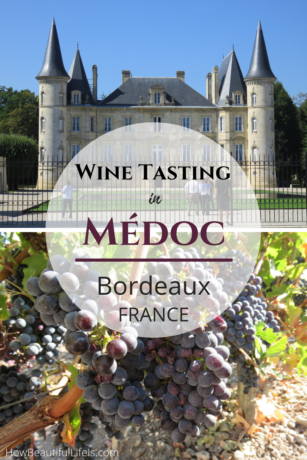




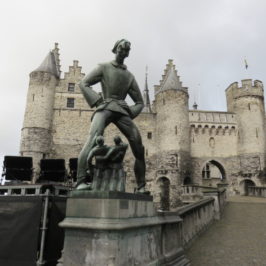
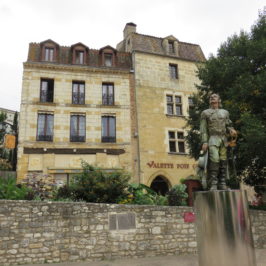
Susan Smith
Fantastic review, very informative and balanced. Going to Paris & Bordeaux in late January. I’ll check out staying at the Chateau you recommended. Safe travels and keep sipping wine.
Colleen
I hope you have a lovely time! Thanks for your kind comments.